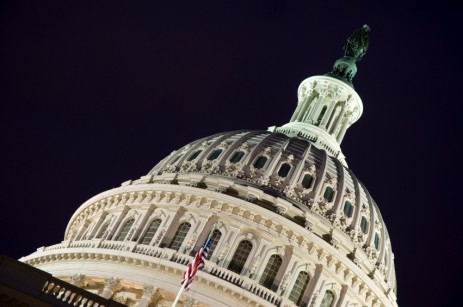 To farm bill or not to farm bill, that is the question. Or that’s been the question occupying the Senate for the last week. The problem, as the National Sustainable Agriculture Coalition explains, is that while there is a complete farm bill draft awaiting a final vote in the Senate, senators have filed almost 300 amendments, several of them unrelated to the bill itself.
To farm bill or not to farm bill, that is the question. Or that’s been the question occupying the Senate for the last week. The problem, as the National Sustainable Agriculture Coalition explains, is that while there is a complete farm bill draft awaiting a final vote in the Senate, senators have filed almost 300 amendments, several of them unrelated to the bill itself.
There isn’t enough time to consider all these amendments, so farm-state senators have worked furiously to pull off a deal involving votes on a package of amendments followed by a vote on the complete bill. It will all culminate today, in what’s called a vote-o-rama: votes on 73 amendments in quick succession. (Here’s the guide to amendments to watch we published last week on Grist — although several of the most reform-minded did not make the cut, nor did the amendment to ban battery cages in egg production. The GMO labeling amendment led by Sen. Bernie Sanders (I-Vt.) will get a vote, however.) While this process will only get the bill through the Senate (the House is another story completely), it looks like it’s the best hope we have this year.
As important as it is for the Senate bill to move forward (the current farm bill expires in September), there are still some deeply troubling aspects to the legislation. As we’ve been reporting on for the last six months or so here at Grist, the expansion of crop insurance as a subsidy for large-scale farmers is a particular concern to many critics because it involves both a premium subsidy for farmers and a government guarantee to backstop losses for the insurance companies.
This dual subsidy makes it a steal for the insurance industry. In fact, as agricultural economist and crop insurance critic Bruce Babcock observes in this piece on MSNBC by the Food & Environment Reporting Network (full disclosure: I’m the organization’s executive director), the program “as currently designed has ‘zero benefit’ to the public.”
Babcock estimates that “for every $2 the government spends on crop insurance, $1 goes to the insurance industry.” The amount of federal dollars flowing to the insurance system led another economist, Vincent Smith of Montana State University, to declare that “the agriculture and insurance industries are stunningly overcompensated.”
Since the crop insurance system isn’t capped in any way, the government is virtually guaranteeing that large commodity farmers won’t lose money, no matter how much they plant. It’s such a sure bet that even Wall Street is paying attention. As the Financial Times [Sub req] reports:
Institutional money managers have emerged as unlikely beneficiaries of a subsidized safety net for U.S. farmers set for expansion by Washington.
… “The fact of the matter is that you can insure your crop at a level which means your farmer isn’t going bankrupt. I’ve got a government-backed counterparty,” said Hunt Stookey, head of farmland investment at AEW, which manages $47.5 billion in real estate. “I can’t have that bad a year.”
… Big asset managers such as AEW and GMO have joined TIAA-CREF, UBS and Hancock Agricultural Investment Group in the farmland investment niche. Institutional investors still own only 1-2 percent of U.S. crop land and are barred from land purchases in some states.
Crop insurance is “just one of many factors that we consider,” said Jose Minaya, head of natural resources and infrastructure investments at TIAA-CREF, the $487 billion money manager.
In agricultural investment circles, the importance of the heavily subsidized crop insurance program is nonetheless acknowledged.
I bet it is. An unnamed investment adviser goes on to say that he doesn’t know “of any other business where you can insure 90 percent of your P[rofit] and L[oss].”
The way these investors are talking about farmland reminds me a lot of the way they talk about big banks in the post-financial crisis era. If this farm bill passes as is, the federal government will have effectively declared large-scale commodity farms too big to fail. And Wall Street knows it.
Of course, not all senators support this crop insurance subsidy. Several have proposed amendments to cap insurance premiums as well as to place limits on payouts. There’s even a proposed amendment that would limit the crop insurance premium subsidy to only farmers making less than $750,000. That’s not a small number, but as soon as it was proposed an agricultural “risk manager” came out with suggestions for ways farmers could avoid it.
With these crop insurance “reforms,” the Senate’s farm bill would take a bad system and make it worse. And we’re told that this might be the best Congress can manage right now since the House version will likely be even more favorable to corporations. Yet the Senate’s version does a pretty good job of padding the pockets of insurance companies and big Wall Street investors on its own.
This farm bill could really do with a little more “farm” and a little less “free cash for corporations.” Hopefully, the Senate will oblige.



